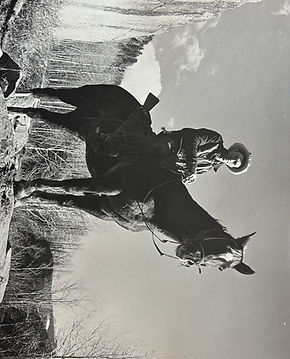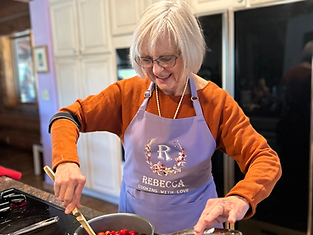
.png)
Welcome to R121 Ranch
Welcome to R121 Ranch! We’re so glad you’re here and we can’t wait to share the beauty and excitement of life on the ranch with you.
Whether you’re here to learn more about what we do, follow our seasonal adventures, or simply enjoy a glimpse of ranch life, we’re happy to have you along for the ride!

Explore R121 Ranch Life
.png)
R121 Ranch Photo Gallery
The R121 Photo Gallary
.png)
R121 Ranch YouTube Channel
.png)
Subscribe on YouTube!

R121 Ranch History
R121 Ranch boasts a rich and varied history, shaped by generations of people who have lived and worked here. According to local residents, the ranch was once a frequent stop for Native American tribes hundreds of years ago, serving as part of their hunting grounds. Artifacts such as large game arrowheads and pottery have been found in the area, providing evidence of this ancient connection to the land.

Originally, the property was known as the Dallemeter (sp?) place. It wasn’t until sometime before the 1950s that the Reed family purchased the land, likely using it for cattle grazing. In the 1950s, the Robbins family rented the ranch, continuing its use as a grazing area for cattle. In the late 1950s, the property was bought by Summers and Red. The organization moved sheep onto the property from their winter grazing area. The sheep remained on the property through lambing season before being moved to their summer, mountain grazing range. The stories from local “old-timers” describe the springtime hills blanketed with so many sheep that the landscape would appear white, and the hills themselves seemed to move as the herd made its way across the land.

In 1962, Clarence Robbins—son of the man who had rented the ranch in the 1950s—purchased the property. Clarence owned the ranch until 2002, and during his tenure, he used it for a variety of purposes. At different times, he grazed up to 50 horses, and cattle, including one of the area’s first herds of Scottish Highland cattle. Later, he raised goats and rabbits. Clarence was a true cowboy, deeply passionate about cattle drives, branding, and, most of all, horses. He was known for riding the most unruly and “snakey” horses—ones that no one else dared to ride. It’s said that when Clarence rode, he would go twice as far as anyone else, holding on tight while the horse ran wild. After a while, the horse would tire, and Clarence would calmly guide it back to the group. He even used a pond on the property as part of his horse training.
The shallow pond, said to be shoulder-high for a horse, would provide the perfect opportunity to tire out a bucking horse as Clarence rode it into the water, emerging with a tired but compliant horse in tow.
If you visit our ranch today, you’ll notice a small pond near the front of the property. During the 1960s and 1970s, there was also a small oil well located nearby. This well was a source of constant frustration, as it contaminated the water in the pond. Clarence’s son recalls the well being nothing but a nuisance, and they were relieved when the well was finally shut down. Tragically, two cows died after drinking from the contaminated pond.
In 2001, Ron and Regena Williams purchased the ranch. They built most of the structures that exist here today and contoured and enlarged the fields and pastures. It was on the ranch that the Williams raised two sons. Together with the Baldwins, who owned the ranch across the highway, the Williams’ family raised elk on the land—up to 75 at one point. They sold elk meat to restaurants in Colorado, supplied breeding stock to other elk ranches, and hosted high-wire hunts for trophy hunters from around the country. In 2015, the property was sold to the Schultz family, who continued raising elk and cattle while also harvesting and selling horse hay to local buyers.
Finally, in 2021, we were fortunate enough to purchase the property. Since then, we have focused on preserving the ranch’s history while making improvements to better fit our vision for the land. It’s been a privilege to meet and connect with longtime residents—many of whom come from families who have called this valley home for five generations.
Mancos, the nearest town, is just two miles from the ranch. The town’s slogan, “Where the West still lives,” rings true. From cattle drives to cowboys working cattle on horseback, the old ways are very much alive here. We regularly participate in chuckwagon meals and welcome visitors to step onto our ranch, where the spirit of the Old West thrives alongside the New West.


.png)


The Tour of R121 Ranch


.png)
.png)



_edited.jpg)

























.png)

